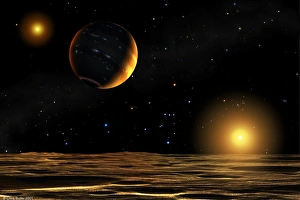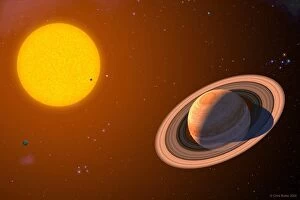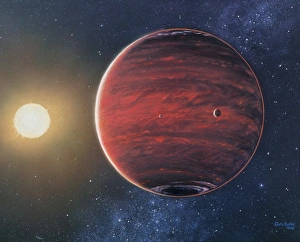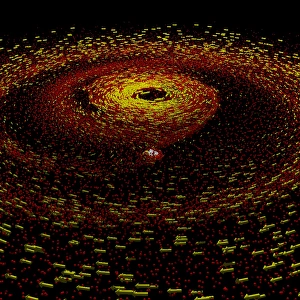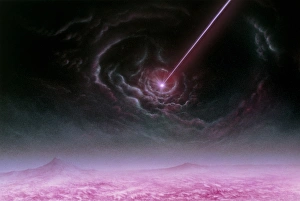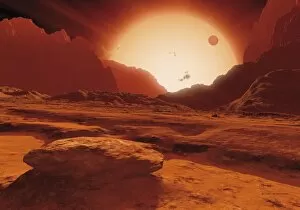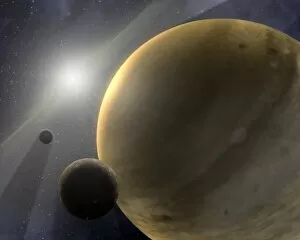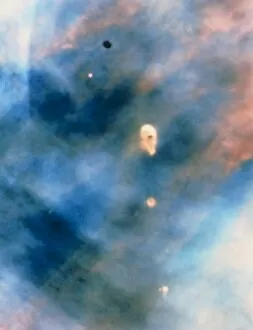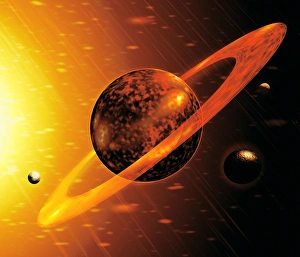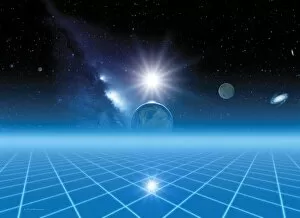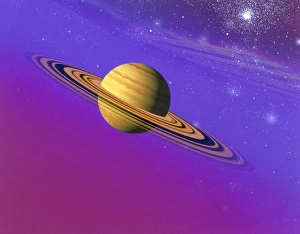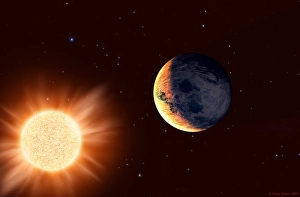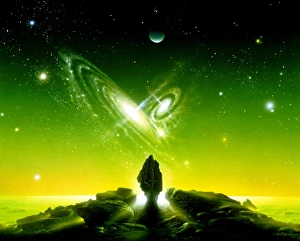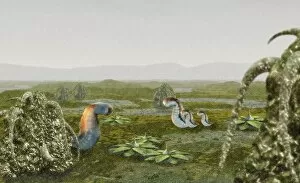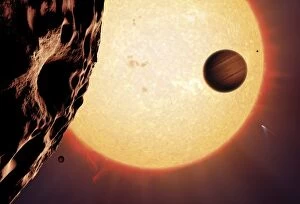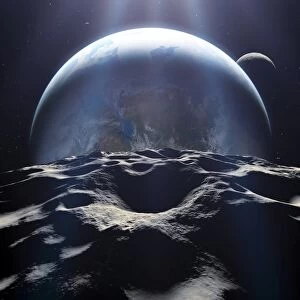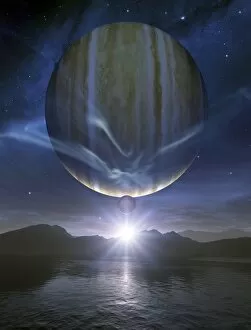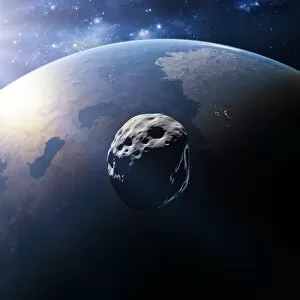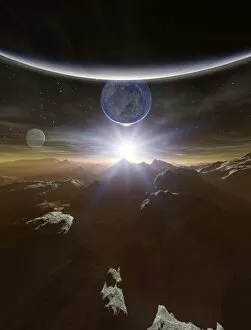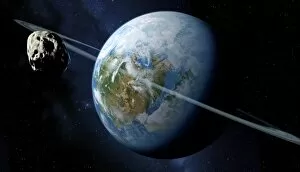Alien Planetary System Collection (page 2)
Exploring the vastness of the universe, we are captivated by the enigmatic wonders of an alien planetary system
All Professionally Made to Order for Quick Shipping
Exploring the vastness of the universe, we are captivated by the enigmatic wonders of an alien planetary system. In this mesmerizing artwork, colliding galaxies dance in a cosmic ballet, their celestial bodies intertwining like ethereal brushstrokes on a canvas of infinite possibilities. Comparing planetary systems becomes an awe-inspiring endeavor as we witness another masterpiece unfold before our eyes. The artwork portrays a harmonious symphony of orbiting planets, each with its own unique characteristics and mysteries waiting to be unraveled. Among these captivating systems lies Gliese 229, where artistry meets imagination. This depiction showcases an otherworldly landscape that beckons us to explore its uncharted territories and unravel its secrets hidden within the depths of space. Venturing further into this extraterrestrial realm, we encounter an alien planet bathed in ethereal light. Its exotic terrain stretches beyond our wildest dreams—a testament to nature's boundless creativity and diversity across the cosmos. In stark contrast to Earth's gravity, we find ourselves transported to a low-gravity alien world through stunning artwork. Here, beings effortlessly glide through the air as if defying conventional laws—an extraordinary sight that challenges our understanding of what is possible in distant realms. As we continue our journey through this captivating planetary system, another breathtaking vista unfolds before us—a migration of celestial bodies captured in exquisite detail by artistic mastery. Witnessing such grandeur reminds us that even on interstellar scales, change is constant and beauty knows no bounds. Alien planets dotting the cosmic tapestry offer glimpses into unimaginable landscapes teeming with lifeforms yet unknown to humanity. Each one tells a story written in starlight—an invitation for us to imagine what might exist beyond our familiar blue planet. Gazing upon an alien planet against the backdrop of a colossal red giant illuminates both wonder and trepidation within us.


